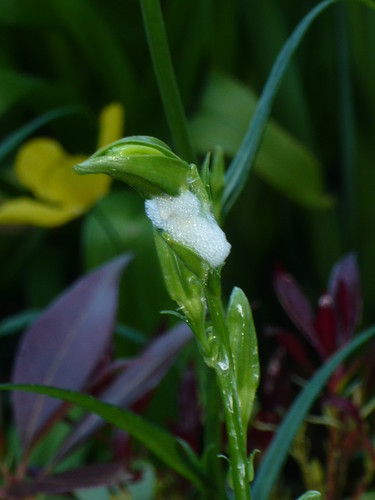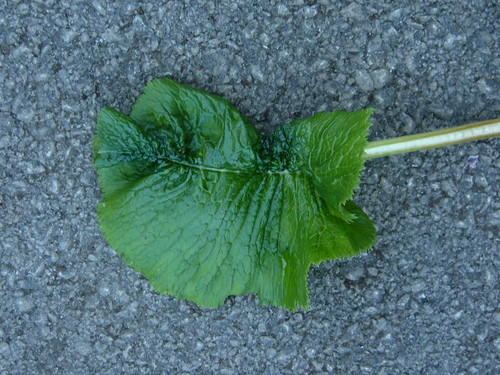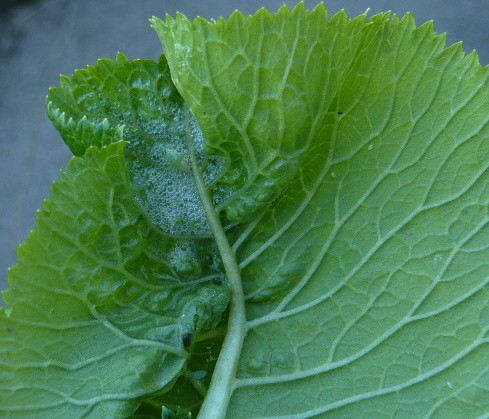Cuckoo Spit and The Froghopper
It is nothing to do with birds or frogs but there is a lot of it about this year.

Cuckoo spit is the white froth found on plants in early summer. It contains and protects the grub or nymph of the Common Froghopper .
They are called Froghoppers because from above they appear frog-like, and they are able to hop significant distances when disturbed.
Problems Caused by Cuckoo Spit
- Froghoppers are a pest known particularly to fruit-growers. They feed on plant sap which they extract from the leaves and stems of plants.
- The grubs causes minor damage in itself, but the insects can carry viruses which can cause serious harm to crops.
- The eggs are laid on a variety of plants including tender young shoots of Willow, Cherry, Canterbury Bells, Primulas and Apple.
- Tender shoots and leaves can distort.
- In gardens they are frequently encountered on such plants as chrysanthemum, dahlia, fuchsia, lavender, rosemary and rose.
The immature light green grub can be seen in this froth on the back of this leaf which is now distorted and curling round the wound.
Treatments For Cuckoo Spit
- Hose off the froth with water or soapy water and the grub will desiccate and die before it can lay its own eggs.
- Rub off the Cuckoo spit with your fingers or a cloth if the infestation is small.
- Contact insecticides are unlikely to work due to the bubble barrier.
- Systemic insecticides are necessary if the problem is severe.
- In the greenhouse keep the air humid to discourage adults from laying there 100 eggs.
- If you are tolerant leave the insect to turn into an adult and write off the problem to nature.

Under the dark blemishes are two Cuckoo spit grubs that have sucked the sap and deformed the leaf.
How is the Froth Made
‘The froth is created by the insect excreting a fluid, the result of excess undigested plant sap, exuding through the anus. This sap, as it is excreted, mixes with a secretion from the abdominal glands. Air bubbles are introduced through a special valve on the abdomen which acts like a bellows, and contact with the air causes the liquid to ferment, forming the froth (or spittle).’ from h2g2
It also tastes like it was made in this way so wash your hands!
See also Common Garden Pests

One thought on “Cuckoo Spit and The Froghopper”
I have it all over my lavender i wash it of each morning but the following morning back again. i live in Exeter
Comments are closed.